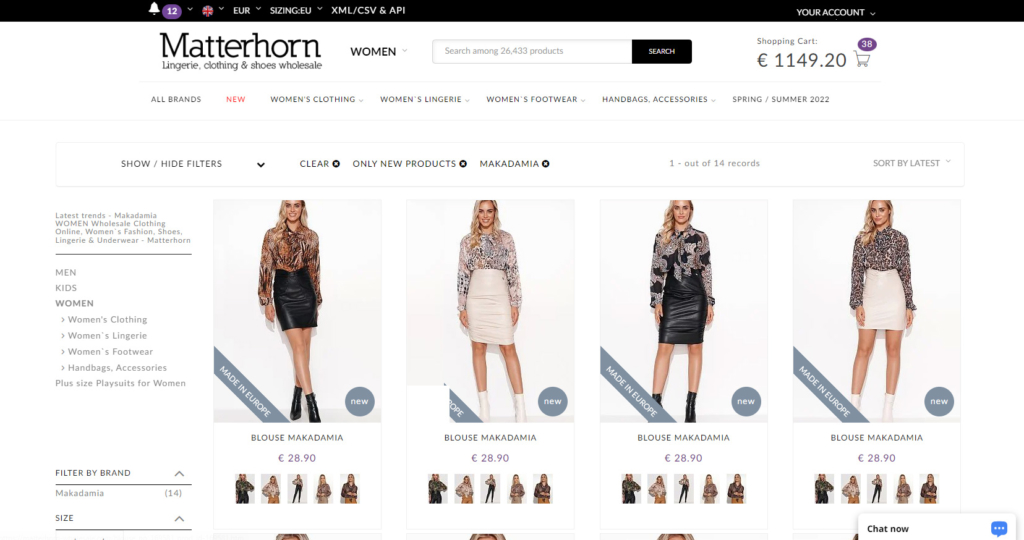Are you ready to embark on the exciting journey of building your own e-commerce business? In today’s digital age, the opportunities for entrepreneurs are boundless, but navigating the vast landscape of online retail can be daunting. That’s why we’re here to guide you every step of the way.
Welcome to our comprehensive guide, designed to equip you with the knowledge and strategies needed to build a thriving e-commerce business. Whether you’re a seasoned entrepreneur looking to expand your online presence or a budding business owner taking your first steps into the digital realm, this guide will provide you with valuable insights, practical tips, and industry best practices.
We have meticulously curated this guide based on the collective wisdom of industry experts and insights from the most reputable sources in e-commerce and online marketing. Drawing from renowned content marketing blogs like Neil Patel Blog, Content Marketing Institute, and Copyblogger, we’ve synthesized the latest trends, strategies, and techniques to help you succeed.
In this guide, we’ll explore various aspects of e-commerce, from understanding the different business models to mastering the art of effective product marketing. We’ll delve into the world of search engine optimization (SEO), copywriting, content marketing, and much more. Our aim is to provide you with a comprehensive understanding of the e-commerce landscape, empowering you to make informed decisions and drive your business to new heights.
So, fasten your seatbelt and get ready for an exhilarating journey into the realm of e-commerce. In the following pages, you’ll find a wealth of knowledge, actionable insights, and practical strategies that will transform your e-commerce venture into a resounding success.
Table of contents:
I. Introduction
II. Understanding Dropshipping
III. Pros of Dropshipping
IV. Cons of Dropshipping
V. Understanding Traditional Retail
VI. Pros of Traditional Retail
VII. Cons of Traditional Retail
VIII. Comparison Between Dropshipping and Traditional Retail
IX. Deciding What’s Best for Your Business
X. Conclusion
I. Introduction
In today’s rapidly evolving retail landscape, small business owners find themselves at a crossroads. Traditional retail, with its brick-and-mortar stores and in-house inventory, has been the foundation of commerce for centuries. Yet, the advent of digital technology has birthed a compelling alternative – dropshipping.
Dropshipping and traditional retail are two vastly different business models, each with its distinct pros and cons. While traditional retail gives you complete control over your inventory and direct interactions with your customers, it comes with higher startup and operational costs. On the other hand, dropshipping allows for lower initial investments and the freedom to run your business from anywhere in the world. However, it brings along challenges of lower control over customer service and potentially slim profit margins.
Understanding these differences is pivotal for small business owners. It helps them decide on a business model that suits their objectives, resources, and market realities. This article aims to shed light on the intricacies of dropshipping and traditional retail, exploring their advantages and drawbacks, to help small business owners make an informed choice. We hope to demystify these two business models, helping you find the best fit for your entrepreneurial journey and long-term success.
Remember, there’s no one-size-fits-all answer. Each business is unique, and what works best will depend on your goals, strengths, and the nature of the products you sell.

II. Understanding Dropshipping
Dropshipping is a retail fulfillment method where a store doesn’t keep the products it sells in stock. Instead, when a store sells a product using the dropshipping model, it purchases the item from a third party — usually a wholesaler or manufacturer — who then ships it directly to the customer. As a result, the seller doesn’t have to handle the product directly.
This business model stands out because of its accessibility and minimal financial risk. With dropshipping, you can start a business with little to no initial investment, avoiding the significant costs of purchasing and storing inventory. It also offers incredible flexibility — as a dropshipper, you can operate your business from anywhere with an internet connection, whether that’s your home, a café, or a beach halfway around the world.
One successful business that leverages the dropshipping model is Wayfair. This U.S.-based e-commerce company is one of the world’s largest online destinations for home goods. Wayfair operates by dropshipping most of their products directly from the manufacturers to the customers, eliminating the need for physical stores and large warehouses. They focus on providing a vast selection of options, exceptional customer service, and detailed product descriptions — all excellent strategies for succeeding in dropshipping.
However, dropshipping is not without its challenges. The following sections will delve deeper into the pros and cons of this innovative business model, equipping you with a better understanding of whether it’s the right fit for your business venture.
III. Pros of Dropshipping
The dropshipping model comes with several advantages that make it an attractive option for many entrepreneurs, especially those starting their journey in e-commerce. Here are the main pros of dropshipping:
- Low Startup and Operational Costs: Traditional retail businesses require significant upfront investments to purchase inventory and manage physical retail spaces. With dropshipping, you only purchase a product when you’ve already made the sale and received payment from the customer. There’s no need to invest thousands upfront in inventory, making it a low-risk option for startups. Moreover, operational costs like electricity, rent, and staffing for physical stores are non-existent in the dropshipping model.
- Wide Product Selection Possibilities: Since you don’t need to pre-purchase the items you sell, you can offer a vast array of products to your customers. If your supplier stocks an item, you can list it for sale on your online store at no additional cost. This ability to host a broad inventory gives you the flexibility to experiment with different products to understand what resonates best with your audience.
- Reduced Risk Due to No Need for Inventory: Overstocking or understocking can lead to significant losses in a traditional retail business. With dropshipping, you don’t need to worry about these risks. Since you don’t stock the products, issues like unsold inventory or storage costs don’t affect your business.
- Flexibility of Location-Independent Management: Dropshipping offers unparalleled flexibility. As long as you have an internet connection, you can run your business from anywhere in the world. You’re not tied to a desk or a specific location. This flexibility makes dropshipping an excellent option for those who value freedom and flexibility in their work environment.
Remember, while these benefits are attractive, dropshipping also comes with its own set of challenges. It’s essential to understand the cons as well as the pros when considering this model for your business. We’ll delve deeper into these challenges in the following section.
IV. Cons of Dropshipping
While dropshipping has numerous advantages, it’s important to consider the potential drawbacks this model entails. Here are the main cons of dropshipping:
- Lower Control Over Shipping, Handling, and Customer Service: In a dropshipping business, you have less control over order fulfillment since you don’t handle the products directly. Shipping times and product quality are in your supplier’s hands, which might lead to customer dissatisfaction if not managed effectively. To mitigate this, it’s crucial to work with reliable suppliers and maintain strong communication lines with them.
- Lower Profit Margins Due to Competition: Dropshipping is highly competitive because of its low entry barrier. A saturated market can drive prices down, making it difficult to maintain high profit margins, especially when you’re selling generic products. It’s essential to find a unique selling proposition, whether that’s exceptional customer service, a unique product offering, or a compelling brand story, to stand out in the crowd and justify higher prices.
- Potential Supplier Reliability Issues: A significant challenge in dropshipping is finding and partnering with reliable suppliers. If your supplier fails to deliver quality products on time, it can damage your business reputation. Therefore, due diligence is crucial when selecting your suppliers. Consider factors like their track record, quality control processes, and shipping times before entering into a partnership.
Understanding these potential pitfalls can help you strategize to minimize their impact. For instance, you can invest in building strong relationships with your suppliers, differentiate your business to stay competitive, and invest in customer service to enhance the customer experience despite the challenges.
In the next section, we will explore the traditional retail model, its pros and cons, to provide a comprehensive picture of both models and help you make an informed decision.

V. Understanding Traditional Retail
Traditional retail refers to a business model where products are sold to customers from a storefront or physical location. Retailers purchase products in large quantities from manufacturers or wholesalers, store them in warehouses, and sell them in smaller quantities to end consumers.
A traditional retail store is often characterized by the direct interaction between the buyers and sellers, providing customers with the chance to touch, feel, and try products before purchasing.
A classic example of a successful business using the traditional retail model is Zara. This globally recognized fashion retailer is well-known for its swift response to market trends. With its strategic inventory management and in-house manufacturing, Zara can design, produce, and have their products in stores within weeks. This fast-fashion approach has set them apart in the crowded fashion retail market.
However, like any business model, traditional retail comes with its own set of benefits and challenges, which we’ll explore in the following sections:
- Direct Customer Interaction: Traditional retail businesses have the advantage of direct customer interactions. They can build strong customer relationships, gain immediate feedback, and provide a personalized shopping experience.
- Control Over Brand Experience: In a physical retail store, you control every aspect of the customer’s experience — from the store layout and product displays to the background music and customer service. This can help create a strong brand identity and build customer loyalty.
- Immediate Product Availability: In a traditional retail store, customers can immediately receive their desired product. This can lead to higher customer satisfaction and impulse purchases.
While these benefits are significant, the traditional retail model also has some disadvantages that should be considered, which we will explore in the next section.
VI. Pros of Traditional Retail
The traditional retail model, despite the rise of online alternatives, continues to offer unique advantages that can significantly benefit businesses. Here are the main pros of traditional retail:
- Complete Control Over Inventory, Shipping, and Customer Service: Traditional retailers have full control over their inventory management, enabling them to ensure product availability and manage stock levels efficiently. They also handle shipping and customer service directly, allowing them to ensure that customers receive their orders on time and any issues are resolved promptly and effectively.
- Higher Profit Margins with Direct Manufacturer Negotiations: Traditional retailers often have the advantage of negotiating prices directly with manufacturers, potentially leading to higher profit margins. Purchasing products in bulk can significantly lower cost per unit, allowing retailers to set competitive prices while maintaining a healthy profit margin.
- Direct Customer Interactions Leading to Better Understanding and Relationships: Unlike online stores, traditional retail offers the opportunity for face-to-face interactions with customers. This can lead to a deeper understanding of customer needs and preferences, allowing businesses to tailor their offerings more effectively. Moreover, direct interactions can help build stronger relationships and enhance customer loyalty, which is vital for long-term business success.
These benefits make traditional retail a compelling choice for businesses that prioritize control, customer relationships, and potentially higher profit margins. However, it’s also essential to consider the challenges associated with this model, which we’ll discuss in the next section.
VII. Cons of Traditional Retail
While traditional retail has its advantages, it also comes with challenges that businesses need to consider. Here are the main cons of the traditional retail model:
- Higher Startup and Operational Costs Due to Inventory and Physical Space: Unlike dropshipping, starting a traditional retail business requires a significant initial investment. Costs include purchasing inventory, renting a physical space, hiring staff, and setting up the store. Furthermore, ongoing operational costs such as rent, utilities, salaries, and maintenance can add up, making it a more expensive model to operate compared to dropshipping.
- Inventory Management Risks and Responsibilities: Traditional retail involves managing physical inventory, which comes with its own set of risks. These include the possibility of overstocking or understocking, theft, damage, and the costs associated with warehousing. Moreover, it’s the retailer’s responsibility to track inventory and ensure efficient stock management, which can be time-consuming and complex.
- Limited Flexibility, More Location-Dependent: Traditional retail businesses are tied to a physical location, making them less flexible compared to online businesses. Store hours typically need to align with customer shopping habits, and owners often need to be on-site to manage operations. This model does not offer the same level of location independence as dropshipping.
Despite these challenges, traditional retail can be a profitable business model when managed effectively. Key to this is understanding the market, effectively managing inventory, and offering an outstanding in-store customer experience.
Next, we will compare both business models side by-side to provide a clear picture of their differences and similarities, helping you decide which one is the best fit for your small business.

VIII. Comparison Between Dropshipping and Traditional Retail
While both dropshipping and traditional retail are viable business models, they present distinct characteristics and challenges that can impact your small business in different ways. Here’s a side-by-side comparison of both models:
- Startup and Operational Costs: In terms of financial investment, dropshipping has a significant edge over traditional retail. Since there’s no need to purchase inventory upfront or manage a physical store, dropshipping significantly reduces both the startup and operational costs. On the other hand, traditional retail requires a substantial initial investment and ongoing operational expenses, such as rent, utilities, and salaries.
- Inventory Management: Traditional retail allows for full control over inventory management. Retailers can ensure product availability and directly manage their stock levels. However, this comes with associated risks and responsibilities, such as potential overstocking or understocking. In contrast, dropshipping eliminates the need for inventory management, reducing both the associated costs and risks.
- Profit Margins: Traditional retailers often have the ability to negotiate prices directly with manufacturers, potentially leading to higher profit margins. However, this is usually offset by the higher operational costs of managing a physical store. Dropshipping typically has lower profit margins due to intense competition and the reliance on third-party suppliers.
- Customer Relationships: Traditional retail excels in fostering direct customer relationships. Face-to-face interactions and the ability to provide a personalized shopping experience can lead to enhanced customer loyalty. While dropshipping businesses can also build strong customer relationships, the lack of direct interaction and dependence on suppliers for product quality and delivery can pose challenges.
- Flexibility and Location Dependence: Dropshipping offers the flexibility of running your business from anywhere in the world, making it an excellent option for those valuing freedom and mobility. Traditional retail is location-dependent, requiring owners to be present at the physical store, thus offering less flexibility.
Choosing between dropshipping and traditional retail largely depends on your business goals, resources, and personal preferences. Both models have their strengths and weaknesses, and understanding these can help you make an informed decision that best aligns with your business vision.
In the next section, we’ll conclude the discussion and provide some final insights to guide your decision-making process.
IX. Deciding What’s Best for Your Business
Choosing between dropshipping and traditional retail involves careful consideration of your business goals, resources, and the market conditions. Here are some factors to consider:
- Budget and Resources: If you have a limited budget, dropshipping might be a more feasible option due to its lower startup and operational costs. On the other hand, if you have the capital to invest in inventory and a physical space, traditional retail can offer unique benefits like direct customer interaction and control over the brand experience.
- Business Goals: If your goal is to test the market with different products without significant investment, dropshipping is a low-risk option. However, if you’re aiming to create a unique customer experience with a specific brand identity, traditional retail might be more suitable.
- Market Conditions: Consider your target audience and the market demand. If your target customers prefer to physically interact with products before buying, traditional retail could be the better choice. Conversely, if your target market is comfortable purchasing online, dropshipping could be more effective.
- Personal Preferences: Your lifestyle and work preferences matter. If you value flexibility and the freedom to work from anywhere, dropshipping aligns with this lifestyle. If you prefer direct customer interaction and hands-on management, traditional retail might be more satisfying for you.
It’s also important to note that businesses can leverage both models for success. For instance, you might start with a dropshipping model to test the market and later invest in a physical store for your most popular products. Alternatively, traditional retailers might expand their reach by adding an online dropshipping component.
In conclusion, the choice between dropshipping and traditional retail isn’t a matter of one being inherently better than the other. Instead, it’s about understanding the unique benefits and challenges of each model and making a decision that best suits your business needs and goals.
X. Conclusion
In the ever-changing world of commerce, choosing the right business model can set the foundation for your success. Whether you decide to opt for dropshipping, embrace traditional retail, or leverage a hybrid model, it’s essential to align your choice with your business goals, resources, and market conditions.
We’ve dissected the pros and cons of dropshipping and traditional retail. Dropshipping, with its low startup costs and operational flexibility, offers an excellent platform for budding entrepreneurs. On the other hand, traditional retail, though requiring a higher initial investment, provides full control over inventory, direct customer interaction, and potential for higher profit margins.
Ultimately, the decision isn’t about choosing the ‘better’ model — it’s about selecting the model that best fits your business vision and objectives. Every business is unique, and your decision should reflect your individual circumstances, financial capability, and long-term business goals.
We hope this article has provided you with a comprehensive understanding of dropshipping and traditional retail, arming you with the knowledge to make an informed decision about your business’s future.
Stay tuned for our upcoming articles where we delve deeper into e-commerce strategies, market trends, and business success stories. We invite you to share your thoughts and experiences in the comments below. Let’s continue the conversation and build a community of thriving entrepreneurs!






















































